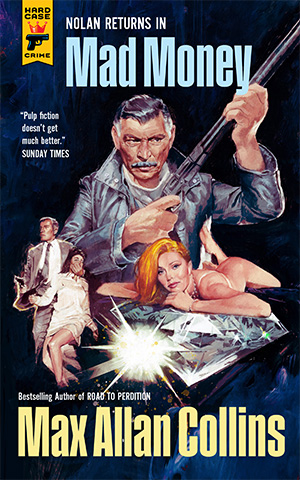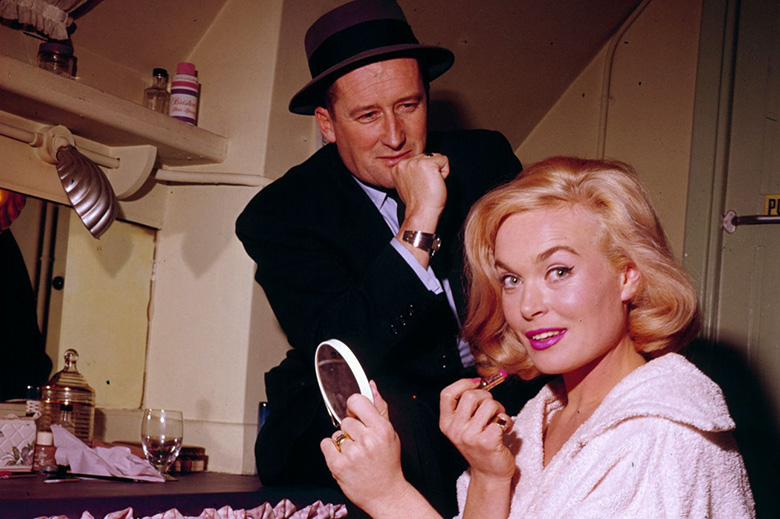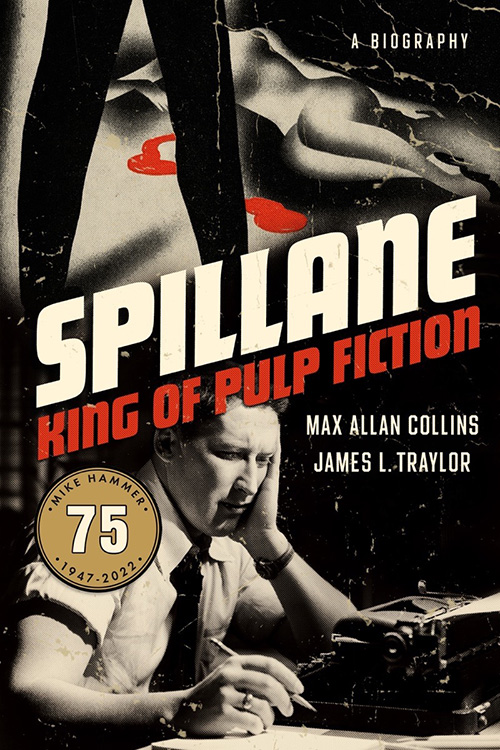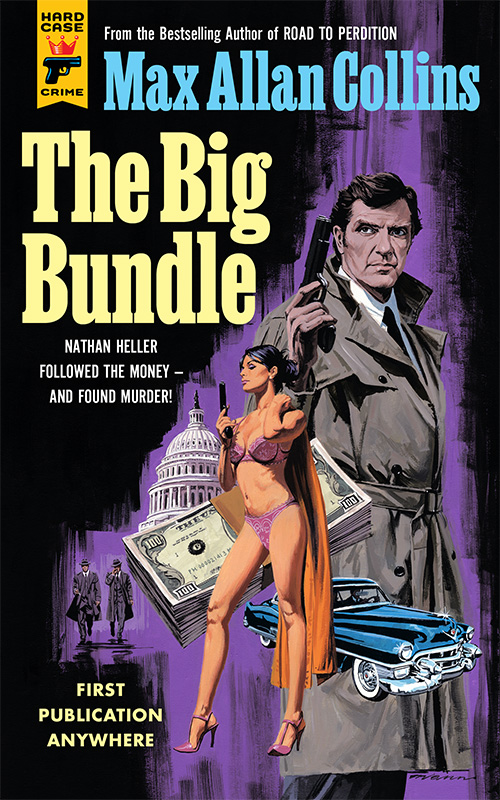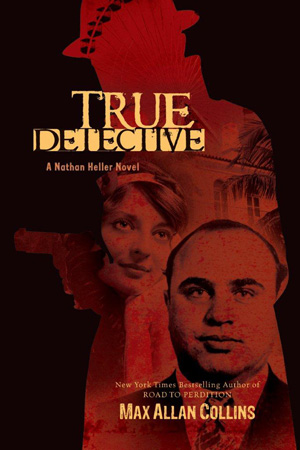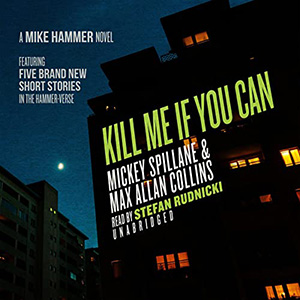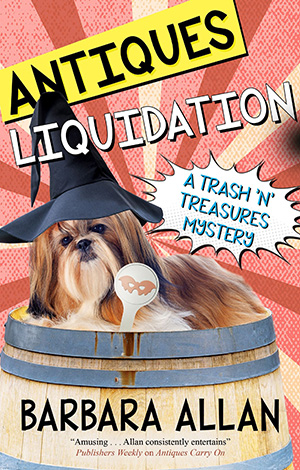Before we get started, I want to share this link for a nice if unexpected endorsement of the first Nathan Heller novel, True Detective, by Paul Davis of the Washington Times.
I am going to share a review with you from the Borg site, a mixed one by C.J. Bunce, who has generally liked my work and to some degree likes it here. It’s almost never a good idea to respond to critics, but one aspect of the Borg review touches on a topic I feel requires at least some response. So I am going to take this opportunity – one writers generally do not get or at least have sense not to avail themselves of – to respond to that objection, and a few other negative aspects of the review. Let me say that as the author, my view is skewed and biased to say the least, and Bunce – a solid reviewer – has every right to his opinion.
BORG: If you were going to stage a heist at a shopping mall, how would you do it? Would you steal from all the stores in the mall in the same heist? Back in 1987, when malls were still in their prime, Max Allan Collins made an attempt in the pages of Spree, his longest novel in the Nolan series. His anti-hero Nolan is the Michael Corleone of grime fiction – they keep trying to pull the retired thief back in just as he’s ready to settle down (Collins pulls him back in each of his 9 novels). Collins knows how to reflect the ugliest people in the ugliest of underworlds, and he does it by creating criminals in Missouri that would make New York mobsters look like wimps.
COLLINS: Is “grime fiction” a knowing pun or a typo? Is it a term that’s previously been used by Bunce and others? Just asking. If it’s purposeful, I might use it myself sometime.
As you see in the cover of Mad Money and the other novels in the series with art by Mark Eastbrook, Nolan is Collins’ Lee Van Cleef lookalike, a bad guy who thinks he’s a good guy in a world of creeps and criminals even worse. With Spree, Collins again pushed the boundaries of pulp crime. It’s full of the writer’s brand of rough sex, racist characters, and violence we’ve seen in his Quarry series and earlier Nolan stories, but this time that includes threats of incest and underage sex, the kind of cringey content that paints the darkness into the story’s villains. It’s also the kind of shock and awe that would later make Quentin Tarantino win movie awards. It all goes full circle, because Nolan was inspired by Donald E. Westlake’s Parker novels, which inspired every other pulp crime writer, including Tarantino. Spree takes Collins into horror territory, something that may give readers a Silence of the Lambs vibe.
I’m still reading and enjoying Nolan novels, with five more to look forward to, but I think Collins’ effort to stretch out the word count of this book is reflected in page after page of padding. Collins is a master of brevity in his books, and he spent more time in this book with descriptions that neither enhance the mood and setting nor further its plot. At a few points his leads Nolan and frequent sidekick Jon even make mistakes that the characters I thought I knew from Bait Money, Hard Cash, and Skim Deep were too smart to do. Maybe I was wrong about them?
COLLINS: I don’t ever knowingly pad. I understand it might come off that way, and I do get accused of it from time to time; but it’s not something I do to plump up page count or whatever. Nor am I in particular a “master of brevity.” If anything I am criticized for writing too much description of setting and wardrobe, which has irritated some readers and reviewers. I don’t care. My object is to use setting and wardrobe for purposes of characterization.
The book is a longer one than the other Nolans and was, like Stark’s Butcher’s Moon, designed to be more in depth than the somewhat brief paperback originals preceding it, and in a way to sum up the series (also like Butcher’s Moon). If by padding, Bunce means more characters than usual, I am guilty. The narrative technique in the Nolan books is to immerse the reader in point-of-view chapters of various characters, some rather minor. I learned this – borrowed (stole) this – from Westlake’s “Richard Stark” persona. This technique is an effort to make the world seem bigger.
Collins provides the minimal details to show how the heist might be possible, but not quite enough to make it believable. The players are numerous: a few guys who worked jobs with Nolan before, plus a set of shoot-first triplets who can fence the loot later. Sherry, the great, tough, equal to Nolan, is relegated here to the victim role, and the 1980s shine through with Sherry as the only woman lead of the story. The only other woman is Cole’s “slutty-looking” daughter, who Cole hits on because she looks like her mom. Yikes. In no doubt Jon’s worst moment of the series, he has sex with the teen (who worships Jon from his days as small-time rock band member), which is bad choice #1, then instead of holding her to swap for Sherry he just lets her go (bad choice #2). Nolan has his worst moment by not grinding the story to a halt and holding the girl for a swap, maybe slapping Jon a few times. The story also just stops, and we don’t get to see the aftermath, which is a disappointment after all the build.
COLLINS: Sherry is held captive and (SPOILER ALERT) frees herself by way of a combination of her courage and ingenuity. Hardly a “victim” role. The structure becomes a back-and-forth report on the heist Nolan and Jon are forced into mounting for Cole Comfort and Sherry’s captivity and her efforts to free herself. At the time, I considered this effective and well-handled…and I still do.
The punchline of the massive robbery is (SPOILER ALERT) when Nolan makes his accomplices put everything back. The last dozen pages are devoted to the “aftermath.”
Of course, Bunce has every right not to like how I handled this, and for it not to work on him. Fine. A novel is a collaboration between writer and reader, and sometimes that collaboration goes better than other times.
Now, however, we arrive at the reason I have chosen to respond to this review. Bunce appears to be object to (or be offended by?) Cindy Lou, Cole Comfort’s seventeen-year-old daughter, being described as “slutty-looking.” But that description comes not from an omniscient author, rather a character in the novel, in that character’s point of view. The reviewer considers Jon’s “worst moment of the series” as having sex with this teenage girl. It’s a “bad choice.”
As we say in the funnies, “sigh.” I run into this with modern reviewers all the time. They object to sexism but not to homicide. Jon is a traveling rock musician in his early twenties; Cindy Lou is seventeen (the age of consent in Iowa is sixteen – making their consensual tryst “cringey” perhaps, but not “underage”). Still, that may indeed be a bad choice. You know what else is a bad choice? Being an armed robber. This is similar to the reviewers who criticize Quarry for sizing up women based on their attractiveness. I guess you’d expect better behavior from a murderer.
Nolan’s “bad choice,” Borg informs us, is that the retired thief does not kidnap Cindy Lou and try to swap her for Sherry. So we’re in favor of kidnapping now. In fact, the second section of the book concludes with a discussion, almost an argument, between Jon and Nolan about whether to kidnap Cindy Lou for this purpose, and how that might play out (not well)…or instead to manipulate this unhappy, abused girl (yes, manipulate – shame on them!), into helping get Sherry back. One of the darkly comic aspects of the novel, and that specific scene, is that Nolan and Jon are not as bad as Cole Comfort. Still, that doesn’t make them “good.” And the story does not “stop” here – it’s a cliff-hanger at the end of a section.
Also, and this is key, certain aspects of how the heist will go down are not revealed until (wait for it) the heist goes down.
COLLINS: This grudging praise is for an aspect of the novel that I am rather proud of – the resolution of both Sherry’s escape from captivity and what Nolan does about the mall robbery he’s been forced into engineering. The fates of Cole and Lyle Comfort are very satisfying to the author and I believe probably are to most readers.
COLLINS: Again…it just may be possible that Jon’s bad judgment was when he decided to be a fucking armed robber. Here, when he (like Nolan) has moved away from that into a more acceptable mode of living – the ironic theme of the series is that all Nolan wants is to realize the American Dream – Jon is still paying for the genuinely bad choice he made in this series, i.e., robbing a bank with Nolan in the first novel (Bait Money).
By the way, the supposed aspects of my life and interests as expressed in the Jon character are exaggerated by Bunce and others. I use my knowledge of comics and being a rock musician to provide some verisimilitude. But nothing else in Jon’s background or frankly character is drawn from me. On the other hand, the Mallory character (in No Cure For Death and other early novels of mine) is me, which is why I don’t write about him anymore – too boring.
COLLINS: I guess faint praise is better than no praise at all. In the context of my career, Spree was the first Nolan novel I wrote after the early Nathan Heller books (none of which is a “typical Collins quick read”). In fact, the success of those early Hellers got me the contract to do Spree (and Primary Target). Spree was a hardcover (not a paperback original, like the previous entries) and was a story designed to have some heft (not padding).
COLLINS: I am grateful for the attention Borg/Bunce brings to this series, and mean zero offense by this response. But I consider Spree the best Nolan novel, and feel it resolves the larger issues of the series, and the specific ones of the narrative at hand, rather well. So much so that I considered the series finished till editor Charles Ardai talked me into doing a coda by way of Skim Deep.
I also know that Spree is the Nolan novel most often cited as the favorite (or best) in the series by readers. Considering Bunce’s speculation that a modern screen version of Spree would probably improve it, I’ll mention two related facts: my own screenplay of Spree was optioned several times (twice by Bill Lustig), and right now Lionsgate is developing a Nolan film…based on Spree.
